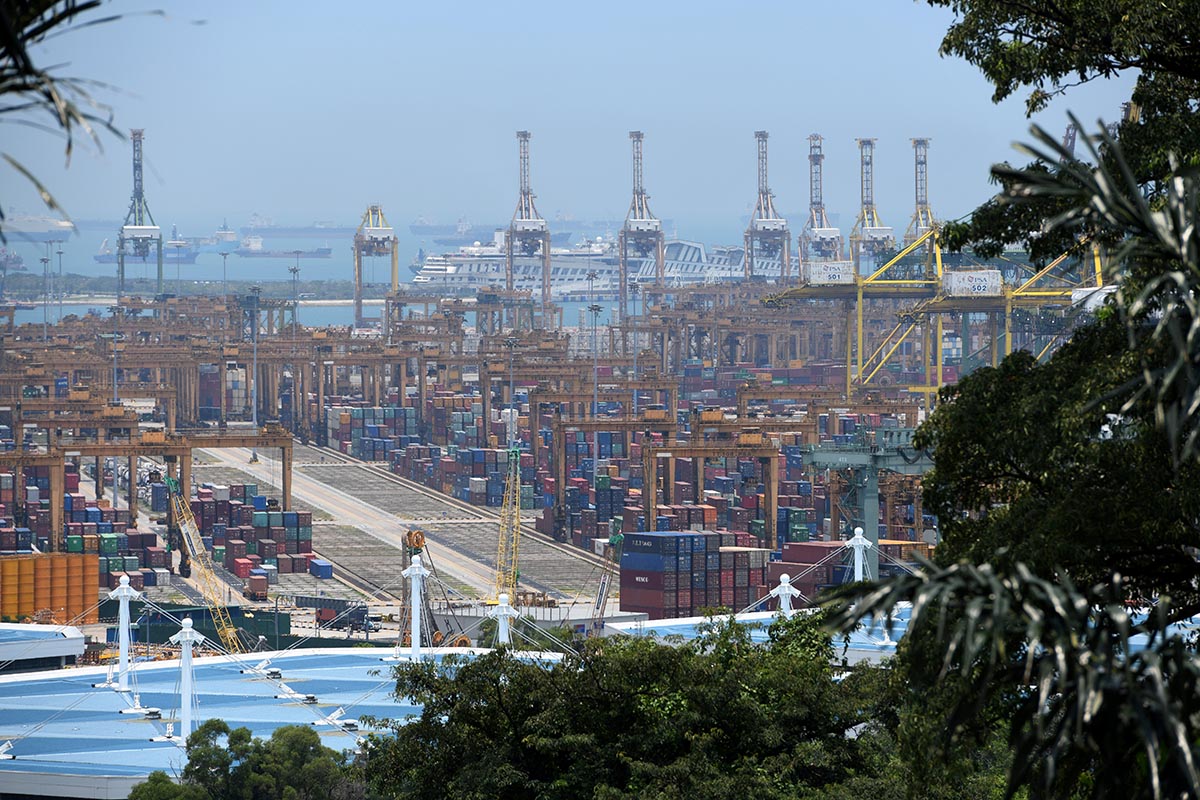In December last year, Sri Lanka formally handed over its strategic port of Hambantota to China on a 99-year lease after failing to pay its debt to Chinese firms.
The port was first developed in 2008 with the financial backing of Chinese banks. However, it soon developed a reputation as a white elephant due to mounting losses. Unable to pay these rising debts, the Sri Lanka government handed over the port to two new firms set up by the China Merchants Port Holdings Company and the Sri Lanka Ports Authority.
Hambantota Port was developed primarily through financing by Chinese banks. According to Chinese officials, Sri Lanka owes more than US$8 billion to Chinese firms.
Debt trap diplomacy
China’s move in Sri Lanka is what many analysts call “debt trap diplomacy” – when loans are offered on the cheap and the borrower is trapped in a cycle of interest capitalisation. In China’s case, when the borrower defaults, China gains control of its resources.
China is involved in Sri Lanka because of its ambitious Belt and Road Initiative (BRI). The BRI is considered to be one of the largest infrastructure projects in history. With the estimated involvement of over 60 countries and a total cost projected at US$1 trillion, the Chinese government claims that the project will improve connectivity and cooperation between Eurasian countries.
The project revolves around several land corridors dubbed the Silk Road Economic Belt, as well as an ocean-based corridor called the Maritime Silk Road. Aside from constructing the main infrastructure of such corridors, Chinese companies are also involved in building the infrastructure surrounding these routes. Sri Lanka’s port of Hambantota is included among the BRI’s infrastructure initiatives.
Some critics claim that the motivations behind the BRI aren’t limited to the economic sphere, but are politically linked as well, construing the initiative as China’s move to gain hegemony within Eurasian countries.
Meanwhile, the situation in Sri Lanka reveals the larger fears many have about the BRI. As the associated costs of building infrastructure are high, many countries take out loans to fund the infrastructure projects that constitute the project. There are also deeper fears that China’s “debt traps” will result in the loss of a country’s sovereignty, with the handing over of resources within affected states if borrowers default on these loans.

Implications for ASEAN
With Southeast Asia heavily involved in the BRI initiative, there are concerns from some quarters that what happened in Sri Lanka might happen in the region as well. Bloomberg reports that China’s infrastructure investments in Southeast Asia total up to US$155 billion, with Indonesia likely receiving a significant chunk of it since it has the most China-backed projects in the region.
According to the Center for Global Development (CGD), there are eight countries that are threatened by BRI debt, with Lao PDR as the sole Southeast Asian nation among these.
Lao PDR’s total foreign debt ballooned from 25 percent of its total GDP to around 65 percent after involving itself in the BRI. The biggest BRI project currently underway in Lao PDR is the Beijing-backed US$6.7 billion high-speed railway. Scheduled for completion in 2021, the CGD pointed out that the secrecy of the financial terms involved raises concerns regarding the consequences should Lao PDR default on its loans.
Aside from Lao PDR, many other countries in Southeast Asia are also taking out huge loans to fund ambitious projects. Most recently, the Philippines put itself at risk of falling into the debt trap by choosing to accept Chinese loans, which are up to 100 times more expensive than equivalent terms offered by Japan. The loans will be used to fast-track infrastructure projects including a dam, railway project and irrigation system.
There are also fears that Myanmar could face the same fate, having recently received US$10 billion from China to build a deep-sea port and industrial zone.
Taking out loans is not inherently dangerous for a nation’s economy, as even economically advanced nations accrue such debts. The danger comes when a country is unable to pay back these debts. The economic prospect of being involved in the BRI may seem tempting; however, governments need to study associated loan terms carefully, and not let short-term gains jeopardise a nation’s economy. If not, ASEAN may see another Sri Lanka in the making.
